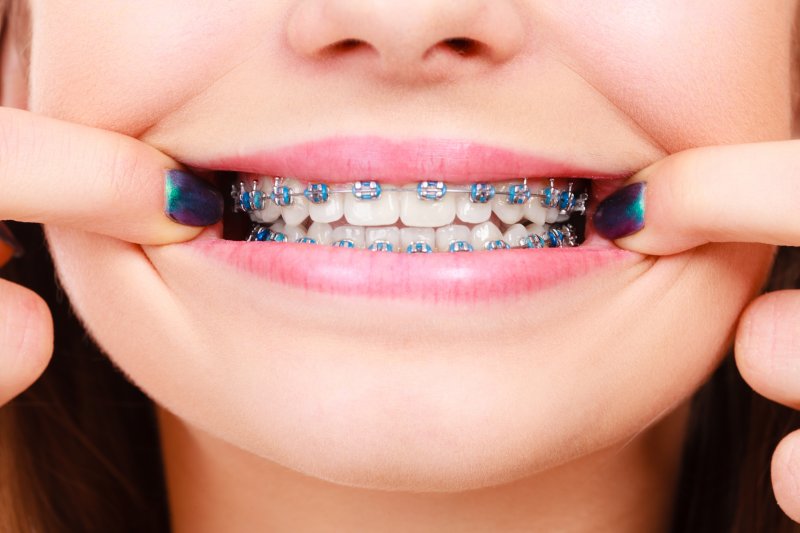
Wearing traditional braces can be the kind of treatment you need to achieve a straighter, healthier smile. While receiving care, though, you may notice that some slight discomfort forms and that your gums become inflamed. While there are many reasons for this, it’s important that you understand why it happens and what you can do about it after treatment is finished. This article details the truth about swollen gums while wearing braces and how your dentist can help.
What Causes Gum Swelling During Orthodontic Treatment?
Anytime you have your wires tightened during a follow-up appointment with your orthodontist, you can expect that you’ll experience some discomfort as well as gum swelling. This is normal as your teeth attempt to shift into better alignment. However, it cannot always be attributed to wire tightening.
Other potential reasons for gum inflammation include:
- Gingivitis (earliest stage of gum disease) – This can occur because small spaces form as your teeth move. This makes it easy for bacteria to become trapped and irritate soft tissues.
- Poor oral hygiene – If you are not cleaning your teeth to remove harmful bacteria and food particles, it can cause inflammation, which leads to gum disease.
- Overall health conditions – Diabetes or being obese can trigger swollen gums and make it harder for your immune system to combat gum disease.
What Can Be Done to Treat Swollen Gums?
Apart from adopting better oral hygiene habits and working with your local physician to manage your diabetes or weight, you can also try various remedies, such as:
- Swishing with warm salt water to heal swollen tissues. You can do this multiple times each day.
- Flossing regularly to eliminate food particles between teeth and reduce swelling in your gums.
- Avoid certain foods that cause discomfort to your gums (i.e., hard, crunchy foods).
- Taking an over-the-counter pain reliever to ease achiness and discomfort.
Can a Dentist or Orthodontist Help?
Yes, seeing a dentist for regular checkups and cleanings can be beneficial when addressing early signs of gingivitis. However, if it appears that your gum tissue is severely inflamed and creating additional growth over your teeth, you may need to inquire about more invasive procedures after orthodontic treatment is complete.
Gum recontouring is a highly effective method of care if you suffer from gingival hyperplasia, and it involves removing excess tissue that is concealing your teeth. The process is worth the time and investment because of how it will work to not only improve your appearance but more importantly, minimize your risk for future gum disease.
Don’t hesitate to ask your dentist or orthodontist for help when experiencing swollen gums while wearing braces. Doing so will ensure that you get the care you need and enjoy a healthier, more beautiful smile in the end.
About the Author
Dr. Tamara Jones is a trusted orthodontist in Plano. Attending Baylor College of Dentistry – Texas A&M Health Science Center, she earned her Doctor of Dental Surgery. She then went on to pursue orthodontics as her specialty at The University of Texas at Houston. Helping patients of all ages achieve healthier, straighter smiles, she and her team at Willow Bend Orthodontics help patients who are at various stages of orthodontic treatment and who need help to minimize swollen gum tissues and discomfort. If you are struggling with inflammation, contact us via the website or call (972) 732-1400.

